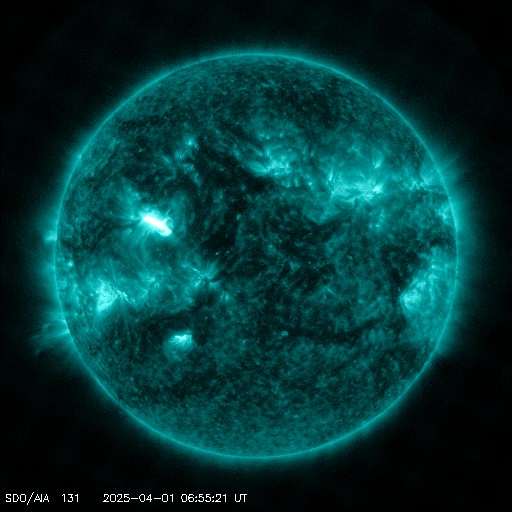Viewing archive of Thursday, 7 September 2017
Geophysical report
Any mentioned solar flare in this report has a scaling factor applied by the Space Weather Prediction Center (SWPC). Because of the SWPC scaling factor, solar flares are reported as 42% smaller than for the science quality data. The scaling factor has been removed from our archived solar flare data to reflect the true physical units.
Solar and Geophysical Activity Summary 2017 Sep 07 0245 UTCPrepared by the NOAA © SWPC and processed by SpaceWeatherLive.com
Joint USAF/NOAA Solar and Geophysical Activity Summary
SGAS Number 250 Issued at 0245Z on 07 Sep 2017 This report is compiled from data received at SWO on 06 SepA. Energetic Events
Begin Max End Rgn Loc Xray Op 245MHz 10cm Sweep 0857 0910 0917 2673 S07W33 X2.2 Sf 410 1122 1122 1123 570 1136 1136 1139 520 1144 1145 1148 1100 1153 1202 1210 2673 S08W33 X9.3 2b 3200 14000 II/IV 1551 1556 1603 2673 S09W38 M2.5 3n 1648 1648 1650 1000 1733 2157 IV 1921 1930 1935 2673 M1.4 2333 2339 2344 M1.2 2345 2345 2346 110
B. Proton Events
The greater than 10 MeV proton flux reached
moderate levels with a peak flux of 104 pfu at
06/0125 UTC.
C. Geomagnetic Activity Summary
The geomagnetic field was quiet to
unsettled, with an isolated active period the last synoptic period
of the day.
D. Stratwarm
Not available
E. Daily Indices: (real-time preliminary/estimated values)
10 cm 133 SSN 079 Afr/Ap 018/010 X-ray Background C1.9 Daily Proton Fluence (flux accumulation over 24 hrs) GT 1 MeV 1.2e+09 GT 10 MeV 3.5e+06 p/(cm2-ster-day) (GOES-13 satellite synchronous orbit W75 degrees) Daily Electron Fluence GT 2 MeV 3.00e+08 e/(cm2-ster-day) (GOES-13 satellite synchronous orbit W75 degrees) 3 Hour K-indices Boulder 1 2 2 3 4 3 1 4 Planetary 1 1 1 2 3 3 2 4
F. Comments
None
All times in UTC
Current data suggests there is a slight possibility for aurora to appear at the following high latitude regions in the near future
Gillam, MB, Yellowknife, NTLatest news
Latest forum messages
Similar AR 3664 vs AR 4048 ??? 7AR4046 143AR4048 60Temporary Topic - Ongoing Solar Proton Events 5Unspecified geomagnetic activity 2176
More topicsSupport SpaceWeatherLive.com!
A lot of people come to SpaceWeatherLive to follow the Sun's activity or if there is aurora to be seen, but with more traffic comes higher server costs. Consider a donation if you enjoy SpaceWeatherLive so we can keep the website online!

Latest alerts
07:15 UTC - 10cm Radio Burst
Begin Time: 01/04/2025 06:45 UTC Maximum Time: 01/04/2025 06:45 UTC Duration: 1 minutes. Peak flux: 190 sfu
07:06 UTC - Solar flare
Strong M5.61 flare
06:48 UTC - Radio Blackout
Moderate R2 radio blackout in progress (≥M5 - current: M5.36)
06:45 UTC - Radio Blackout
Minor R1 radio blackout in progress (≥M1 - current: M1.7)
02:15 UTC - Solar protons
Moderate S2 Solar Radiation Storm - Infrequent effects on HF radio through polar regions and satellite operations
Space weather facts
| Last X-flare | 2025/03/28 | X1.1 |
| Last M-flare | 2025/04/01 | M5.6 |
| Last geomagnetic storm | 2025/03/27 | Kp5 (G1) |
| Spotless days | |
|---|---|
| Last spotless day | 2022/06/08 |
| Monthly mean Sunspot Number | |
|---|---|
| February 2025 | 154.6 +17.6 |
| Last 30 days | 128.5 -22.7 |



